Devil’s Creek is a stunning novel, mixing backwoods folk horror with Lovecraftian cosmicism. Its author, Todd Keisling, is a great guy and a very talented writer. He was kind enough to sit down for a five question interrogation, and so without further ado, here’s his Five For Writing
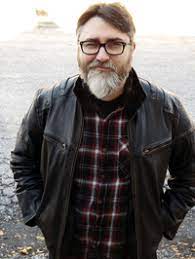 1-How did you get into writing?
1-How did you get into writing?
I think it’s been in my blood for as long as I can remember. My dad has a photograph of me sitting at my granny’s typewriter when I was six or seven years old. Storytelling is something I’ve always done, no matter the medium. My interests varied throughout childhood, but there was always a creative element to it, and I gravitated toward making something and giving it a story. Comics, video games, movies, books—I went through a phase where I wanted to make something with each, either making up my own stories or writing continuations of other stories I loved. When I was in 2 nd grade, I made a comic adaptation of The Legend of Zelda. In 4 th grade, I attempted a comic adaptation of Evil Dead 2 (one of my favorite horror films). Sometime around 7 th or 8 th grade, I tried to write a novel adaptation of Final Fantasy 6 (I made it as far as the World of Ruin). Unfortunately, those early pieces of fan fiction are lost to time, but that’s where it all started, I think. By the time I got to high school, my interests had turned to film, and I wrote a short screenplay for a story that had been bouncing around in my head after the tragedy at Columbine. My senior year, I adapted that script into a novel; the following year, in college,
that novel won 2 nd place in my university’s writing contest. Got paid $200 for that prize. I’ve been chasing the dream ever since.
2-How does where you live affect your writing?
Where I live now doesn’t have much of an impact on my writing. Pennsylvania has been mostly good to me. That said, growing up in Kentucky greatly affected my writing, something I’ve only come to terms with in the last five years or so. Maybe it’s therapy, or maybe it’s just the process of aging, but I’ve spent a lot of time looking back at the events that shaped me into who I am today. I lived in Kentucky for 22 years before I finally escaped. In that time, I learned everything the hard way, growing up as an outcast, geeky goth kid who wanted a place to fit in. I was bullied, mocked, and abused by a social system that favored conformity, sports, and popularity. I just didn’t belong there, and I didn’t have a chance to leave until after I’d finished college. My life has only improved since then, but I dip back into that well of experience whenever my writing calls for it, because that kind of pain has an often-overlooked benefit: empathy.
 3-You mixed the rural and the cosmic to great effect in Devil’s Creek. How did you come up with that pairing?
3-You mixed the rural and the cosmic to great effect in Devil’s Creek. How did you come up with that pairing?
I fell in love with cosmic horror when I was a teenager. Lovecraft, mostly, and some Chambers. Although Lovecraft’s pantheon captivated me, I had a hard time relating to the predominantly New England setting, and I sometimes daydreamed about writing a cosmic horror story set in my hometown. What if there’s a pantheon that exists adjacent to Lovecraft’s, only instead of it being coastal, it’s further inward? Something ancient buried in the woods instead of buried at sea? A living, seething corruption from another dimension instead of a massive tentacled monstrosity. I stewed on that concept for years until the plot of Devil’s Creek finally came together. I had no idea if it would work; it’s so vastly different from contemporary cosmic horror, leaning more into the small-town tropes put in place by King (by design—Salem’s Lot was a huge inspiration), but I had to give it a shot. The book is more straightforward horror than I’d hoped, but I’m happy with the result.
4-You do cover art and design for numerous publishers. Does being an author impact your process for that?
I think so. I’ll explain, even at the risk of sounding pretentious. Every author knows the cover is important. It’s that first impression with a reader, before they’ve even read the synopsis, so the cover design must make that connection. It should be provocative, easy to read, attention-grabbing. You could argue that a great cover is like a good hook in the first paragraph. The same goes for a book’s interior. I approach the interior with the goal of continuing the “visual conversation” that begins with the cover. If it works the way I hope, the reader is met with a visual experience that is contextual with the story they are reading. Most folks probably don’t even notice, or if they do, it’s on a subconscious level, but the idea is to create a design that enhances the mood of the text. Together, they set an expectation that this book is going to be something special, one the reader will remember for years to come. Knowing how important that connection is from an author’s perspective helps inform the overall design.
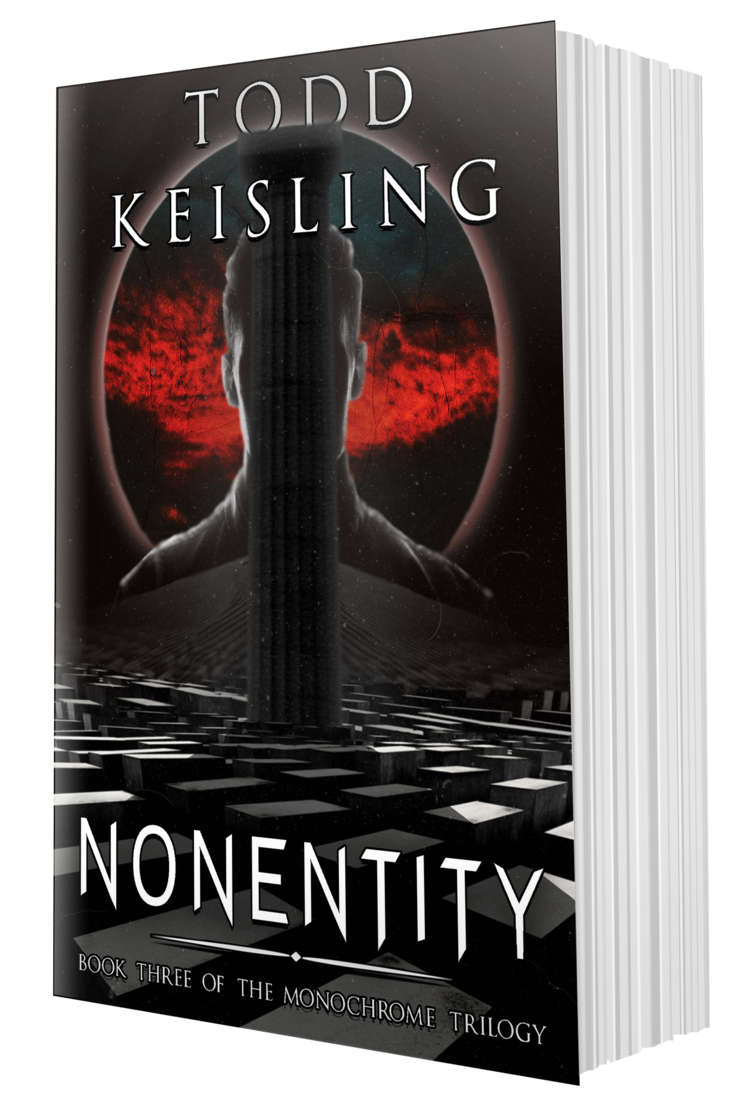 5-There was a big gap between books two and three of the Monochrome trilogy. What made you decide to pick that back up?
5-There was a big gap between books two and three of the Monochrome trilogy. What made you decide to pick that back up?
So, there’s a short answer and a long answer. The short answer is, I didn’t plan on it being a trilogy. The long answer is, I didn’t realize I needed to write a third book until performing some necessary and heavy revisions to book two. My longtime editor, Amelia, put it bluntly: either write another two hundred pages to justify the ending I’d originally written for book two, or write a third book. I chose the latter and proceeded to spend the next several years stressing over what the third book needed to be.
As more time passed, the less I felt inclined to write it, and for a long time I told myself I wouldn’t. I’d moved beyond the series, my writing had evolved, etc. But after I finished Devil’s Creek, I felt like I’d reached a watershed moment in my writing career, and I wanted to start the next phase with a clean slate. That meant finishing that one book I’d abandoned. I reviewed my notes to see what could be salvaged, which turned out to be more than I expected. I also made a list of things that had to change in the first two books to make the third work. In the end, I revised books one and two to set up the plot of the third. It was a lot of hard work and heartache, and while I don’t plan on writing a linear series ever
again, I’m glad I finished it. I can look back with pride and say, “I did that.”
So there you have it, straight from the source. Huge thanks to Todd for taking the time to provide such thoughtful answers.
Until next time!
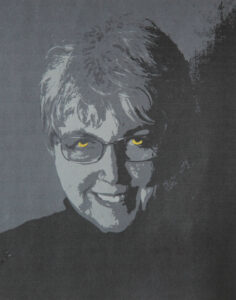 who just happens to keep a mannequin named Sebastian by her desk at all times. (More on him below). I have known her for well over twenty years, ever since she agreed to write a short fiction piece for me back in the White Wolf days, and she doesn’t hold that against me. Witty, wise and wonderful, here’s Five For Writing with P.D. Cacek.
who just happens to keep a mannequin named Sebastian by her desk at all times. (More on him below). I have known her for well over twenty years, ever since she agreed to write a short fiction piece for me back in the White Wolf days, and she doesn’t hold that against me. Witty, wise and wonderful, here’s Five For Writing with P.D. Cacek.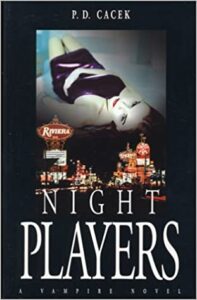 in the hunt and flaunting their total disregard for their formal corporal selves (unless I’ve written them*). Okay, so you’ve lived centuries…get over yourselves. I feel werewolves, even though they are monsters, still retain more of their “humanness” for the simple reason that not only are as much a victim of their curse as the poor (slow) souls they hunt, but are doomed to live with the knowledge of what they have become. They have no power to
in the hunt and flaunting their total disregard for their formal corporal selves (unless I’ve written them*). Okay, so you’ve lived centuries…get over yourselves. I feel werewolves, even though they are monsters, still retain more of their “humanness” for the simple reason that not only are as much a victim of their curse as the poor (slow) souls they hunt, but are doomed to live with the knowledge of what they have become. They have no power to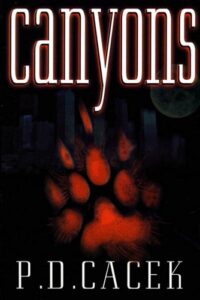 defense?
defense?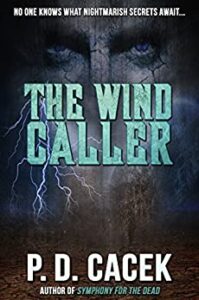 Another personal bit of info is that I love what I call “vulching,” which, in my case, is to swoop in like a vulture on a “Going Out Of Business” sales in search of bargains. Usually I come away with a few things, so when I saw that the JC Pennys in the King of Prussia mall was going out of business, I swooped.
Another personal bit of info is that I love what I call “vulching,” which, in my case, is to swoop in like a vulture on a “Going Out Of Business” sales in search of bargains. Usually I come away with a few things, so when I saw that the JC Pennys in the King of Prussia mall was going out of business, I swooped. 1-You tend to write in series instead of standalone books. What’s the appeal of a series to you?
1-You tend to write in series instead of standalone books. What’s the appeal of a series to you?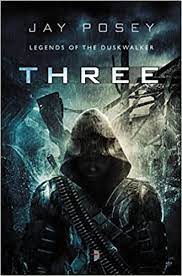 unusual traits that make him unique among everyone else he interacts with, but it isn’t really until the third book that it becomes clear why he is the way he is. I kept trying to find a place to explain it all in that first book. There just wasn’t space. It wasn’t relevant to the story that was unfolding, and the amount of context that readers would have needed for it to make sense was just too much to fit in as an information dump. But after a couple of books’ worth of exploring the state of the Duskwalker world, I felt like readers had lived in it long enough that the third book could reveal that background in a natural way that was integral to the story instead of an “As you know, Bob, Three is special because …” kind of thing.
unusual traits that make him unique among everyone else he interacts with, but it isn’t really until the third book that it becomes clear why he is the way he is. I kept trying to find a place to explain it all in that first book. There just wasn’t space. It wasn’t relevant to the story that was unfolding, and the amount of context that readers would have needed for it to make sense was just too much to fit in as an information dump. But after a couple of books’ worth of exploring the state of the Duskwalker world, I felt like readers had lived in it long enough that the third book could reveal that background in a natural way that was integral to the story instead of an “As you know, Bob, Three is special because …” kind of thing. Mostly a direct challenge from my agent, the esteemed Sam Morgan. After the Outriders books, when we were discussing what to tackle next, he said he’d really like to see what I could do on a more epic scale. My first two series were focused on small groups of people, so when Sam said “how about more epic”, I went from “small group with personal stakes” to “galaxy spanning empire with the fate of the human race in the balance”. It was quite a challenge for me and really stretched me creatively, but I’m really glad that Sam pushed me to give it a shot.
Mostly a direct challenge from my agent, the esteemed Sam Morgan. After the Outriders books, when we were discussing what to tackle next, he said he’d really like to see what I could do on a more epic scale. My first two series were focused on small groups of people, so when Sam said “how about more epic”, I went from “small group with personal stakes” to “galaxy spanning empire with the fate of the human race in the balance”. It was quite a challenge for me and really stretched me creatively, but I’m really glad that Sam pushed me to give it a shot.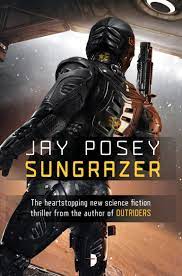 4-The defining trait of many of your characters is utter competence. What’s the appeal of writing
4-The defining trait of many of your characters is utter competence. What’s the appeal of writing 2-What do you think are the main differences between TTRPG and video game writing?
2-What do you think are the main differences between TTRPG and video game writing? 3-What were the challenges in writing for Rainbow Six: Siege, a game that doesn’t necessarily have a traditional narrative structure?
3-What were the challenges in writing for Rainbow Six: Siege, a game that doesn’t necessarily have a traditional narrative structure? 1-You’ve been involved with Vampire: The Masquerade for over two decades. How has it changed in that time, and how has your approach to it changed?
1-You’ve been involved with Vampire: The Masquerade for over two decades. How has it changed in that time, and how has your approach to it changed? 1-Heavy metal and horror. What’s the connection?
1-Heavy metal and horror. What’s the connection? 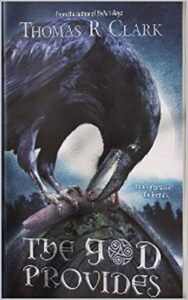
 5-How does your podcasting relate to your writing?
5-How does your podcasting relate to your writing?  1-What’s a Ghost Show, and why did you name your press after it?
1-What’s a Ghost Show, and why did you name your press after it? 1-What says good game writing to you?
1-What says good game writing to you?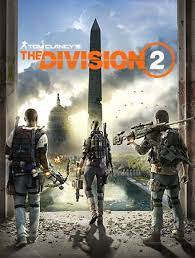 As we explore new regions, we meet new people and all of those people have rich histories and backstories that made them who they are and how they react to the situation at this point. We get the privilege of learning more about established characters by meeting people we’ve never met before and getting their perspective on the state of the world and what our characters have represented to them based on how they have been treated by agents of the Division or individual interactions with our established characters. We will be learning more about many of our established characters in future content releases over the next year and I’m excited to see how the community responds to the new information they get about these people they think they already know. The funny thing about people is we are always much more complicated than expected and unless you directly ask someone why they do a thing and they answer honestly, you can never truly understand someone’s motivations or reasons for behaving the way they do. As long as people are complex and your characters are built like real people, you will never run out of potential stories you can tell about them.
As we explore new regions, we meet new people and all of those people have rich histories and backstories that made them who they are and how they react to the situation at this point. We get the privilege of learning more about established characters by meeting people we’ve never met before and getting their perspective on the state of the world and what our characters have represented to them based on how they have been treated by agents of the Division or individual interactions with our established characters. We will be learning more about many of our established characters in future content releases over the next year and I’m excited to see how the community responds to the new information they get about these people they think they already know. The funny thing about people is we are always much more complicated than expected and unless you directly ask someone why they do a thing and they answer honestly, you can never truly understand someone’s motivations or reasons for behaving the way they do. As long as people are complex and your characters are built like real people, you will never run out of potential stories you can tell about them.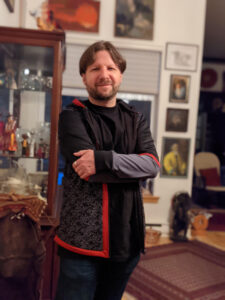 1-What’s it like putting together a narrative for a game like HyperScape that is by definition non-linear?
1-What’s it like putting together a narrative for a game like HyperScape that is by definition non-linear?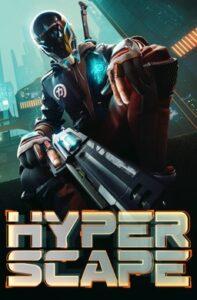 This meant a LOT of planning: how much info could we write into a character’s bio in the store? What would be consistent and change between different skins? What bio info would change from season-to-season? When was a character/skin going to be released DURING a season? What order would the memory shards be released? Could we do environmental storytelling on the game map that would link to the fiction? Where would the trailers or short movies come out? How do we tell an engaging story in the comic that links to everything else, but also feels self-contained?
This meant a LOT of planning: how much info could we write into a character’s bio in the store? What would be consistent and change between different skins? What bio info would change from season-to-season? When was a character/skin going to be released DURING a season? What order would the memory shards be released? Could we do environmental storytelling on the game map that would link to the fiction? Where would the trailers or short movies come out? How do we tell an engaging story in the comic that links to everything else, but also feels self-contained?  4-What’s your favorite part of the job when it comes to game writing?
4-What’s your favorite part of the job when it comes to game writing?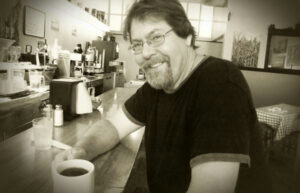 Alex Bledsoe’s Tufa novels are some of the finest modern fantasy out there. If you haven’t read them, they’re a treat and you owe it to yourself to pick them up. He also was part of the collective that wrote for Transgressive Horror: Reflections on Scare Films that Broke the Rules, which is where our paths crossed. He was kind enough to sit down for five questions about the Tufa novels, vampires in Memphis, and why all horror movies are transgressive. Without further ado, I give you Five For Writing with Alex Bledsoe.
Alex Bledsoe’s Tufa novels are some of the finest modern fantasy out there. If you haven’t read them, they’re a treat and you owe it to yourself to pick them up. He also was part of the collective that wrote for Transgressive Horror: Reflections on Scare Films that Broke the Rules, which is where our paths crossed. He was kind enough to sit down for five questions about the Tufa novels, vampires in Memphis, and why all horror movies are transgressive. Without further ado, I give you Five For Writing with Alex Bledsoe. All good horror films should be transgressive in some sense; it’s in their nature. The point of horror is to expose the viewer to images and ideas they would never encounter elsewhere, and to show the embodiment of those images and ideas as realistically as possible. The German cinemagoers lucky enough to see Nosferatu on its first release would have considered the vampire as a transgressive figure, a visual representation of something that broke so many social rules.
All good horror films should be transgressive in some sense; it’s in their nature. The point of horror is to expose the viewer to images and ideas they would never encounter elsewhere, and to show the embodiment of those images and ideas as realistically as possible. The German cinemagoers lucky enough to see Nosferatu on its first release would have considered the vampire as a transgressive figure, a visual representation of something that broke so many social rules.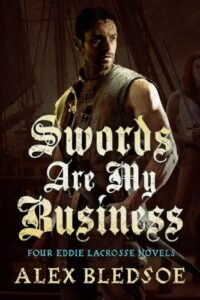 4-Your Eddie LaCrosse series is fantasy noir. Why mix those two genres?
4-Your Eddie LaCrosse series is fantasy noir. Why mix those two genres?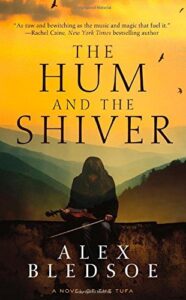 5-The Tufa novels feel deeply personal. Where did they come from, and will we see more of them?
5-The Tufa novels feel deeply personal. Where did they come from, and will we see more of them?